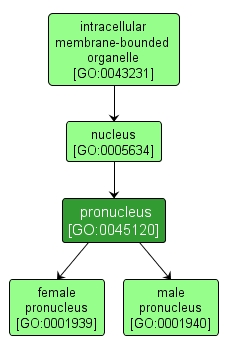| Desc: |
The nucleus of either the ovum or the spermatozoon following fertilization. Thus, in the fertilized ovum, there are two pronuclei, one originating from the ovum, the other from the spermatozoon that brought about fertilization; they approach each other, but do not fuse until just before the first cleavage, when each pronucleus loses its membrane to release its contents. |














